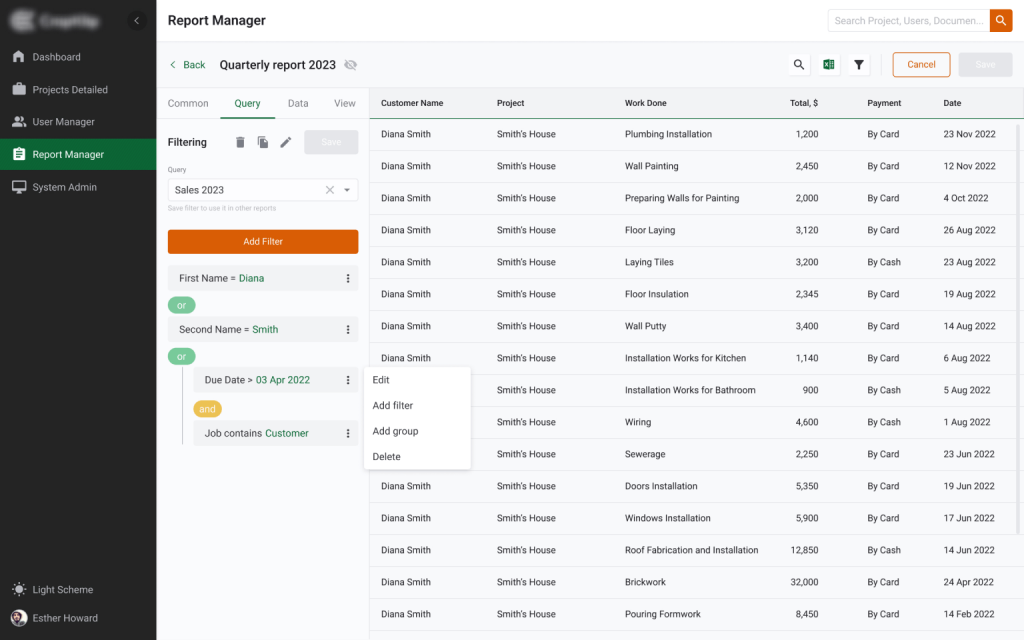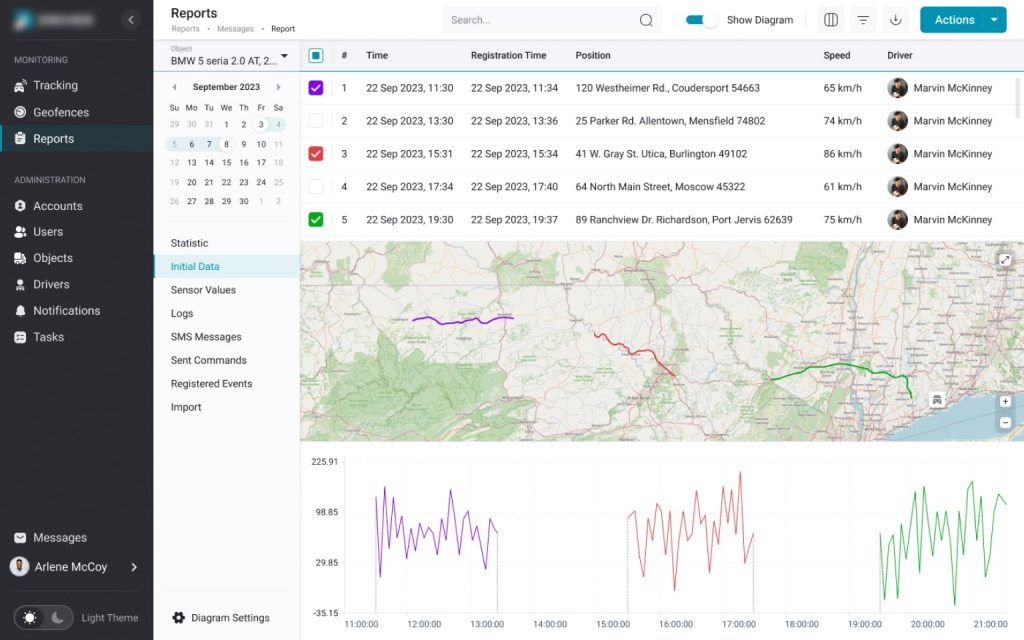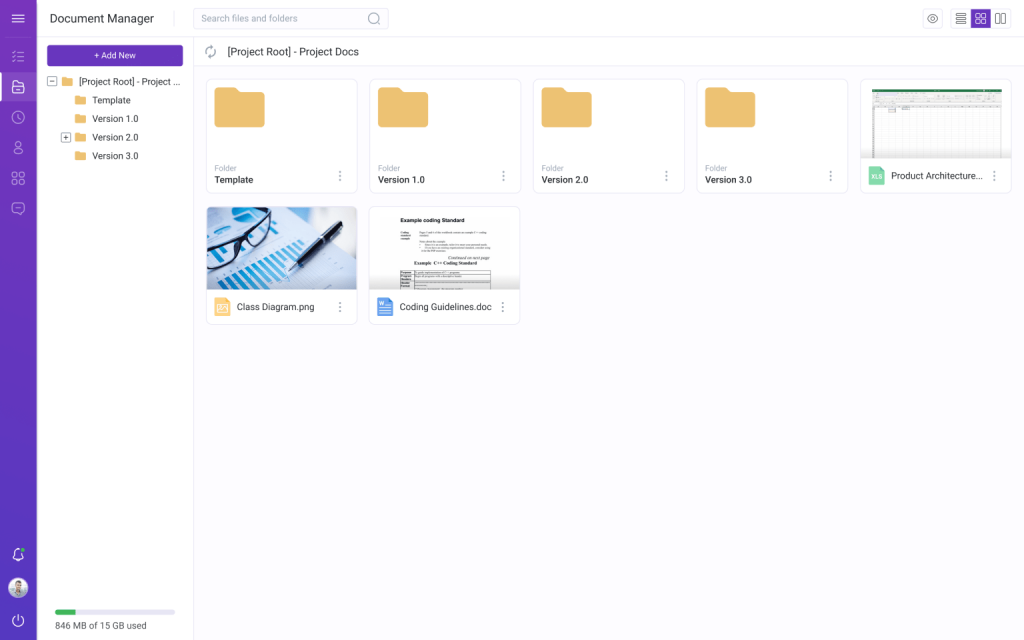Construction industry professionals all around the globe deal with projects that significantly vary in scope, scale, and complexity. From small houses to colossal industrial facilities, each project type presents its unique challenges. To overcome them and deliver projects on time and within budget, it’s crucial to have effective management software at hand. Today, we’ll discuss different types of construction projects and the specific challenges associated with them. Also, we’ll consider how software solutions can help with overcoming these obstacles.
Residential Construction
It can be called the backbone of the construction domain and probably our society as a whole since it implies building structures for habitation. It can involve both the building of new structures and the renovation of the existing ones. Such tasks can be undertaken by a range of stakeholders, from individual landowners (aka self-build) to specialist house-builders, property developers, and public or social housing providers, such as local authorities, for example. As these buildings can have a significant impact on the surrounding community, it’s essential for the management software to allow businesses to comply with local building regulations during the construction or renovation process.
Examples:
- Apartments;
- Condominiums;
- Other residential buildings.
Challenges
Regulatory compliance. Simply building one of them wherever you want is not an option. Companies must meet local building codes, which can vary significantly. In this scenario, handling permit processes and inspections is crucial.
Budget and schedule management. Many companies exceed their initial budgets due to fluctuating material costs and unforeseen expenses. Builders often struggle to keep track of fixed expenses per job, especially if their software lacks required features, which can lead to financial strain. Costs and timelines management, especially with unforeseen changes, can be difficult.
How Software Can Help
Compliance tracking. Construction management software can ensure adherence to local regulations by centralizing all compliance documentation, such as permits, safety certificates, and inspection reports. Such software lets employees of your construction business automatically schedule regular inspections and send reminders to relevant team members. Real-time monitoring tools allow management specialists to track compliance status and monitor safety protocols, environmental regulations, and labor laws effortlessly. In case an accident happens, the software system can help document and report it and direct your team to take required corrective actions.
Budget and schedule optimization. Residential construction management software with budget forecasting and timeline tracking features can allow construction companies to avoid overruns. With such help, management teams can stay within financial limits and anticipate cost fluctuations. Effective cash flow management software ensures that the company has enough cash to meet its immediate expenses, such as paying for labor and materials. By forecasting cash inflows and outflows, companies can anticipate periods of cash surplus or deficit and plan accordingly.

Source: UI/UX Modernization for a Construction Management Web App
Commercial Construction
This term covers a complex field of structures designed and built to make money. These construction projects require considering dozens of various factors. They must comply with specific building codes and standards, such as those related to public safety and accessibility. For example, the Americans with Disabilities Act (ADA) imposes specific rules regarding parking accessibility, door and entrance specifications, and other aspects. With stricter standards for prequalification and higher financial risk, commercial construction projects demand a high level of expertise and attention to detail.
Examples:
- Office buildings;
- Shopping centers;
- Restaurants;
- Hotels.
Challenges
Prequalification standards. Contractors and subcontractors face higher prequalification standards, such as bonding capacity and financial backing.
Accessibility requirements. Meeting strict safety and accessibility standards, such as ADA.
How Software Can Help
Centralized prequalification platform and financial risk management features. Construction project management software can provide access to a platform that organizes the entire prequalification process, from collecting necessary documents to evaluating submissions. Platform users can create and customize prequalification forms to gather specific information related to bonding capacity, financial backing, safety records, and past project performance. Automated software can assess the submitted information against predefined criteria, reducing the time and effort required to qualify contractors.
Accessibility and safety compliance tools. Commercial construction project management software have automated tools that can perform regular compliance checks throughout the project lifecycle. The software can also include customizable checklists and templates based on ADA or other guidelines that can be used during inspections to ensure all accessibility requirements are met.
Industrial Construction
This domain involves the development of large-scale industrial facilities. They often take place in remote locations, which may lead to additional management challenges. Considering high stakes and strict deadlines, industrial construction demands a focus on safety, logistics, and coordination between team members. As these projects are subject to heavy governmental regulation, particularly regarding environmental impact, industrial construction requires a deep understanding of regulatory requirements and compliance.
Examples:
- Warehouses;
- Manufacturing units;
- Power plants;
- Oil refineries.
Challenges
Specialized expertise. These projects require expert teams and advanced planning for highly technical tasks such as refinery or power plant construction.
Logistics. Projects often occur in remote areas, posing logistical challenges for material and personnel management.
How Software Can Help
Collaboration and expertise tracking. Project management software can track the skills and certifications of team members. It ensures that only qualified personnel are assigned to critical tasks.
Centralized logistics management. Custom-made software can provide a centralized platform to plan, coordinate, and manage all logistics activities. It includes features such as scheduling deliveries, tracking shipments, and managing inventory. It can also optimize delivery routes to ensure timely and cost-effective transportation of materials.

Source: Traccar-Based GPS Tracking System
Mixed-Use Construction
Mixed-use construction combines residential, commercial, and sometimes industrial elements within a single development. It allows companies to create vibrant and convenient urban or suburban environments. They promote urban living and require intricate planning to balance the needs of different users. By diversifying the uses within a single development, mixed-use projects can reduce financial risk for developers but also increase the overall complexity and operational risk. As companies often deal with a mix of residential and commercial units, recreational facilities, and green spaces, they demand a holistic approach to design and construction.
Examples:
- A high-rise building in a city center with ground-floor retail, mid-level office spaces, and upper-level residential units;
- A suburban development with separate buildings for residential units, office spaces, retail stores, and recreational facilities, all connected by walkable paths;
- A development around a new transit station featuring residential units, office spaces, and retail stores, all within walking distance of the station.
Challenges
Complex design and planning. Mixed-use projects bring together various parts from different construction project types. Fusing them together harmoniously is not always a trivial task.
Stakeholder management. Management teams must coordinate with multiple parties, including tenants, homeowners, and local authorities, increasing the chance of conflicts.
How Software Can Help
Integrated planning and design. Building Information Modeling (BIM) systems incorporated into the software allow for detailed 3D modeling and visualization. It helps in planning and coordinating the different elements of mixed-use projects, ensuring they fit together seamlessly. A collaborative design approach can be achieved with tools that allow architects, engineers, and planners to collaborate in real-time, making it easier to integrate residential, commercial, and industrial components.
Stakeholder collaboration. Properly designed software can offer a centralized platform where all stakeholders, including tenants, homeowners, and local authorities, can communicate and share updates. It helps ensure that everyone is on the same page and reduces the chance of miscommunication. A centralized document repository can store all project-related documents, such as permits, contracts, and design plans. Real-time notifications and updates keep all parties informed about progress, changes, and important milestones.

Source: Project Management Application Based on the Gantt Chart
Infrastructure (Heavy Civil) Construction
The infrastructure construction domain, also known as heavy civil or heavy engineering, involves the development of large-scale public works. These projects require heavy machinery and substantial investment, making them complex and highly engineered. With a long pre-development phase and extensive planning, infrastructure construction demands a high level of expertise and experience. Contractors often need to build their resumes and relationships before bidding on larger government contracts, and regular maintenance and repairs are necessary to keep these projects in good condition. That is why construction management scheduling software is often used by the specialists to avoid confusion and have better monitoring.
Examples:
- Bridges;
- Highways;
- Railways;
- Ports;
- Airports;
- Dams.
Challenges
Specialized equipment and contractors. Large-scale equipment and highly specialized contractors are required, making resource allocation a challenge.
Maintenance requirements. Even after completion, there’s the need for continuous maintenance and repair, which adds long-term responsibilities for contractors.
How Software Can Help
Resource allocation. With the right software, management teams can maintain a comprehensive database of all available equipment and contractors, including their capabilities, availability, and location. Real-time tracking of equipment using GPS and RFID technology helps in monitoring the location and status of machinery, which helps to ensure that equipment is utilized effectively and reduces the risk of theft or loss.
Read also: Types of Tracking Systems. How to Monitor Anything from Animals to Construction Equipment
Maintenance scheduling and planning. Management specialists can use specialized scheduling software to automate the scheduling of regular maintenance tasks, ensuring that all necessary inspections and repairs are carried out on time. The software also enables preventive maintenance programs, which can help in identifying and addressing potential issues before they become major problems.
Institutional Construction
This sector of the industry is designed for public use and can be privately developed, owned, and/or operated. Companies must adhere to strict regulations and design requirements. While there is significant overlap with commercial construction, this one has unique needs and considerations. It focuses heavily on creating functional and safe spaces for public use.
Examples:
- Schools;
- Hospitals;
- Government buildings;
- Religious institutions.
Challenges
Public use and accountability. Schools or hospitals are under public scrutiny and must meet high standards of safety and functionality.
How Software Can Help
Public accountability tools. Software platforms include features for documenting compliance and sharing progress with the public or government agencies. Automated tools help construction companies track compliance with safety and regulatory standards from the start to completion. It ensures that all safety and functionality standards are met. Customizable checklists based on industry standards help ensure that all aspects of the project meet high-quality standards.
Green Construction
Green tech prioritizes environmental sustainability, using eco-friendly materials and designs to minimize environmental impact. Here, companies aim to create structures that not only reduce energy consumption but also promote a healthier indoor environment. With a focus on reducing waste and conserving resources, green construction requires a holistic approach to design, materials selection, and building techniques. As the demand for sustainable buildings grows, green technologies are becoming an increasingly important aspect of the building industry.
Read Also Construction Technology Trends: What the Future Holds for Construction Industry
Examples:
- Energy-efficient buildings;
- Green roofs and living walls;
- Geothermal systems.
Challenges
Environmental standards and certification. Companies must meet sustainability criteria, using eco-friendly materials and energy-efficient designs. Obtaining green building certifications, such as LEED, requires documentation and audits, which can be time-consuming.
How Software Can Help
Sustainability monitoring. Custom software for construction management helps track and manage the use of sustainable, recycled, and eco-friendly materials to ensure the project adheres to environmental standards and reduces its ecological footprint. Energy consumption monitoring throughout the project helps identify areas for improvement and ensure that energy-efficient practices are implemented. The software can also help ensure compliance with various environmental regulations and certifications, such as LEED (Leadership in Energy and Environmental Design) and BREEAM (Building Research Establishment Environmental Assessment Method). It includes tracking and managing the various credits and prerequisites across different categories, such as site development, energy efficiency, water management, and indoor environmental quality.
Conclusions
Different types of construction domains require management teams to deal with different problems. Sometimes, it’s the need to handle heavy machinery operating on remote sites, and sometimes, it’s the time itself represented as long pre-development phases where losing an important document can ruin all the extensive planning. Luckily, there’s always the possibility to delegate the lion’s share of the tasks to the right software.
Want to make sure that all the bulldozers will arrive at the bridge construction site on time? It’s not a problem! The logistics module of your custom software will take care of it. Scare of budget overruns? Budget management, cash flow management, and forecasting features will get you covered. Are you not sure which specific set of features will fit your company better? Contact us, and we’ll be happy to offer you a suitable solution.